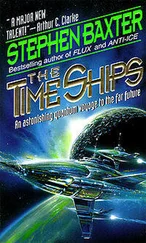Relativity is a conceptual challenge.
The trouble is, relativistic effects depend on lightspeed, which is a very high speed (three hundred thousand kilometres a second in a vacuum). So on the scales of the short distances and low speeds on which we generally live our lives, relativistic effects are unimportant, too small to be noticed (but not too small to be measured by fine enough instruments, which is how we know Einstein’s ideas are correct). Relativity isn’t part of our everyday “common sense” universe; we didn’t evolve with it, and so it’s hard for us to grasp.
But special relativity, at least, isn’t terribly hard mathematically. (“Special” relativity deals with the mechanics of motion; Einstein’s later theory of “general” relativity deals with gravity: curved spaces, black holes and wormholes.) After all the theory was dreamed up, at the beginning of the twentieth century, by a young patent clerk in Switzerland with too little to do and too much imagination, who wondered how the universe would look if you could travel with a light beam…
And Jake aboard Venture Star , barrelling through space at over half lightspeed, certainly can’t ignore relativity’s effects.
The basic principle of special relativity is to do with lightspeed itself. Suppose you’re travelling on a train coasting at a uniform hundred kilometres an hour. I choose a more modern carrier, a French TGV perhaps, and on a parallel track I overtake you at a hundred and twenty kilometres an hour. From your point of view, if you measure my motion, you’ll see me pass at the difference of our velocities—my hundred and twenty less your hundred means you see me pass at twenty kph.
This works fine at our everyday scales, but not when lightspeed is involved.
Suppose instead of riding my TGV I fire a laser beam along the track beside you. I would measure the speed of that beam at the standard three hundred thousand kilometres per second (ignoring for now the complication that lightspeed varies in different media, such as air). You, in your carriage, by analogy with the overtaking trains, ought to measure the speed of the same beam at three hundred thousand kps, less your hundred kph. Correct? Wrong —you would derive the same speed as I would for the light beam, even though we are moving at different velocities. I know this defies common sense, but, remember, we are tiptoeing into realms outside our everyday experience.
The explanation derives from physics older than Einstein’s, the theory of electromagnetism developed in the 1860s by Edinburgh physicist James Clerk Maxwell—the same man who predicted that a beam of light can exert a pressure.
Light can be regarded as an electromagnetic wave, and so all its properties, including its speed, are predicted by Maxwell’s theory. But that’s a puzzle. Einstein clung to a basic principle of physics: in a lab moving at a uniform speed, so suffering no acceleration—a lab such as you could set up on your hundred-kph train—you ought to find reality obeying the same physical laws as in any other lab moving at a uniform speed, even if the speed is different. You couldn’t feel the motion, so, said Einstein, it should make no difference to the physics.
And that’s why the speed of light is such an oddity, unlike other speeds such as the speed of a moving train, or even the speed of sound. Lightspeed is a physical constant, a fundamental part of the fabric of the universe, like the charge on the electron. You can measure it as a ratio of other physical quantities that you can determine in the lab. And if two observers measure the speed of the same light beam, even if they are moving at different speeds themselves, they have to get the same answer.
So what happens when you do try to measure lightspeed aboard a moving train? If the speed always comes out at the same answer, your measurements of distances and time must vary , depending on how fast you travel. This is where the famous contraction of space and dilation of time at high speeds comes from. Specifically, as seen from back on Earth, Jake’s rulers shrink in the direction of Venture Star ’s motion, and his clocks slow down; “dilation” means stretching. But Jake doesn’t notice, because his body “shrinks” in proportion, and the internal clocks of his body “slow down” too.
I know—it’s extraordinary. But if you hang on to the basic idea that distances and times adjust themselves so that lightspeed always comes out to the same number whatever your own speed, then you have the essence of special relativity.
So what does this mean for Jake on his starship?
Suppose Jake sails off on Venture Star , waved away by his twin brother Tommy. (Yes, I know, if Tommy had been alive Jake wouldn’t be going to Pandora as his replacement at all—but bear with me.)
When he’s woken, Jake is told that he’s been in cryosleep for five years, nine months and twenty-two days. But as Tommy sees it from Earth, Jake’s time slows down and his distance is compressed, and by Tommy’s clocks Jake has taken six years nine months to get to Alpha Centauri. If Jake comes straight home he will arrive back several years younger than his twin, for less time will have passed for him on both legs of the journey. An extraordinary thing: when the twins are reunited, Jake is suddenly younger than his twin. Isn’t he?
You might be troubled by something fishy here. That was Tommy’s point of view. What does Jake see? For him, Earth with Tommy aboard apparently sails off at seventy per cent lightspeed. From Jake’s point of view, isn’t it Tommy whose clocks should be slowed down? And if Jake were to return, shouldn’t it be Tommy who’s younger? This is known as relativity’s “twin paradox”—and the name is why I was so keen to bring Tommy back from the dead, briefly.
The resolution is that the twins’ situation isn’t symmetrical, because of those acceleration phases. Jake undergoes accelerations that Tommy doesn’t; Jake feels the boost phases (or would if he was awake), which Tommy doesn’t. When he got back to Earth Jake would find he was the younger twin—and Tommy would agree.
Because of calculations like this, Einstein, dreaming in his patent office, realised there could be no universal clock, no universal time. Every clock in the universe is in motion, and most of those motions will be different: Venture Star ’s chronometers sailing the gulf between the stars, Tommy’s clock on Earth sailing around the sun, Quaritch’s clock in his Dragon gunship as he flies over Pandora, as it orbits its parent world Polyphemus, as it orbits Alpha Centauri A. Each of those clocks is measuring only its own “local” time, which runs at a different rate from the time measured by any other clock, a time with meaning only for those travelling with that clock. In Einstein’s universe there is no grand frame, no tremendous cosmic graph with universally agreed axes. All that exists are events : points in space and time. But there is good mathematics that lets us handle all of this. And relativity helps us understand causality. Because the scattered events can only be connected by effects that travel at lightspeed or less, lightspeed is what makes sure cause and effect occur in the right order.
Whether you think this kind of universe is entrancing or appalling depends on your point of view. But, according to our very best measurements, this is the universe we’re stuck with, and we’ll have to face relativistic consequences if we ever build a working starship.
But that is a big if.
Humans have already sent off four interstellar craft, of a sort: the unmanned Pioneer and Voyager probes of the 1970s. Having been launched by chemical-propulsion rocket boosters, they escaped from the solar system after slingshotting off the gravity wells of the giant planets. None of them is heading for Alpha Centauri, but Voyager 2 will pass within a light year of the nine-light-year-distant star Sirius—after a cruise, not of five or six years, but nearly four hundred thousand years.
Читать дальше










